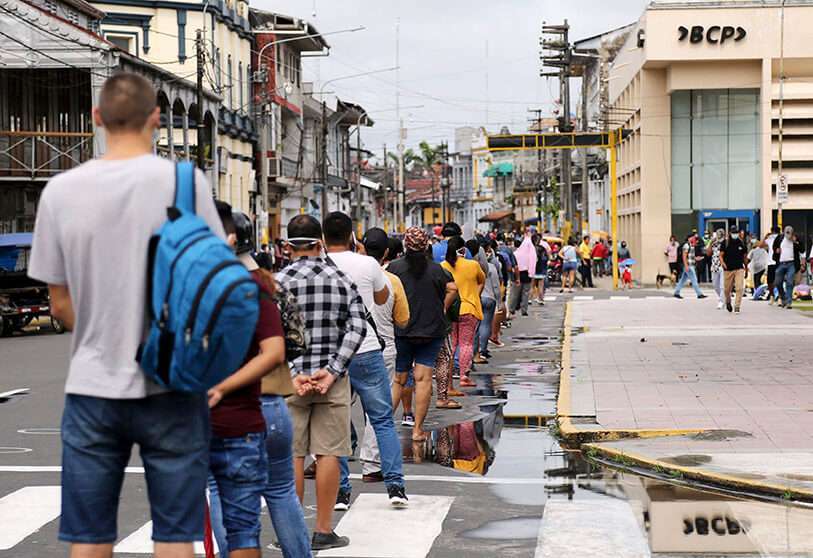Inflationomics: Latam

Inflation and economic recovery, not COVID-19, will be the main puzzles of the year. Markets have suffered from the advance of the omicron variant, which does not allow a clear cut between pandemic and post-pandemic, but there is no despair: there are antiviral treatments, a third (and now fourth) dose and a reduced appetite to reinstate restrictions.
What does despair is inflation, as well as the sense that central banks could overreach and undo an economic recovery that, while moderately robust in 2021, shows signs of faltering in 2022 and 2023. To this we must add the global trend towards more indebted countries. Latin America, whose public debt is around 78% of GDP, is not excluded and is, in the words of El País, "the most indebted emerging region in the world"; it has already exhausted its fiscal space.

It is prudent to recall that even in the United States inflation rose to 7% in December, a 40-year high; much the same was true in Mexico, where it reached 7.36%, and much worse in Brazil, whose rate of 10.06% is exceeded only by the grotesque 50.9% in an increasingly dollarised Argentina.
This inflationary wave was once considered a short-lived phenomenon, partly caused by the disruption of labour markets and supply chains. The thesis has not ceased to be feasible - the crisis of containers, which transport even the region's agricultural inputs, persists - but its persistence has caused confusion.
Washington is showing signs of wanting to whip inflation, and everything seems to indicate that in March the Federal Reserve will add 25 basis points (0.25%) to the interest rate, with the possibility of three more hikes over the course of the year. The move was planned for this year, albeit not before the summer, but the Fed's attitude has seen a noticeable tightening prompted by the figures for the last quarter of 2021.
Meanwhile, Lael Brainard, a member of the Board of Governors and Biden's candidate for Fed Vice Chair, boasts of a "powerful anti-inflationary tool". In addition to the rate hike, the Fed now confirms that it will cease its asset purchases, the total amount of which reached $8.77B in the first week of this year.

There will be some fakery and exaggeration, which for central banks often have the same effect as real policies, but it would not be the first time that the US has resorted to shock therapy against inflation. It has already done so in the 1980s, undergoing great hardship for the sake of stabilisation.
In the face of such news, US and German bonds, which are virtually risk-free, have recovered their end-2019 yields, although Bund yields remain negative and the European Union is not talking about a rate hike. A wave of private borrowing is also expected; large companies will seek cheap credit before the window closes, and US households will be able to refinance their mortgages, taking advantage of the exquisite - and moribund - cocktail of low rates and high real estate prices.
Latin America lacks real monetary sovereignty. Whether formally dollarised or not, their economies depend on the exchange rate, bolstered by remittances and weakened by low confidence in national currencies; commodity prices, which are their main contribution to international markets; and foreign capital flows.
Faced with a Fed rate hike, the region will have to suffer. The effect will be moderated by the refusal, so far, of Japan and the EU to raise rates; the European recovery has been weaker, and in Japan there is no panic, as, before the pandemic, they had been fearing deflation for years and have not yet reached their 2% inflation target (in November they stood at 0.6%).

As an emerging market, Latin America benefits from low interest rates in the developed world, whose capital seeks higher returns, giving rise to financial bicycles, which allow borrowing at low interest rates (in a developed country, for example) and allocating the capital to an emerging country, where it is expected to have a better return. The opposite situation is taking shape: if capital extracts better returns in the US and Germany, markets that also pose less risk, Latin America will face a major desertion, a flight.
To avoid this, and because of unviable inflation rates, Latin American central banks have sought to raise rates. Mexico raised rates five times in 2021; in February the rate stood at 4% and ended the year at 5.5%. In December Brazil added 150 basis points at a stroke, taking the benchmark rate to 9.25% while announcing further increases. Peru has sought, with some success, to safeguard the value of the sol, which fell 10.3% against the dollar in 2021, by raising its benchmark rate to 3% last week.
Latin America wants to demonstrate its financial probity and avoid at all costs something akin to the lost decade of the 1980s, when rising rates in the developed world triggered a ferocious flight of capital, thus devaluing national currencies and making regional industrialisation impossible.
As María Eloisa Capurro and Maya Averbuch point out for Bloomberg, Latin American bankers' anti-inflationary anxieties risk becoming impotent. The high importance of the informal economy (in Mexico, 21.9 per cent of GDP and 56.3 per cent of employment), which has no access to bank credit, reduces the importance of interest rates.
Moreover, Latin American governments lack control over supply chains and energy prices, the main drivers of international inflation. It is here that optimism is reasonable: inflation, though high, promised to be higher and is trending downwards; trade surpluses, which bolster national currencies, are extraordinary; and the region has entered a technology boom.
"The Americanist is an independent newsletter for understanding the key political and economic issues in Latin America. If you would like to receive it weekly in your inbox, you can subscribe for free at elamericanista.com"



